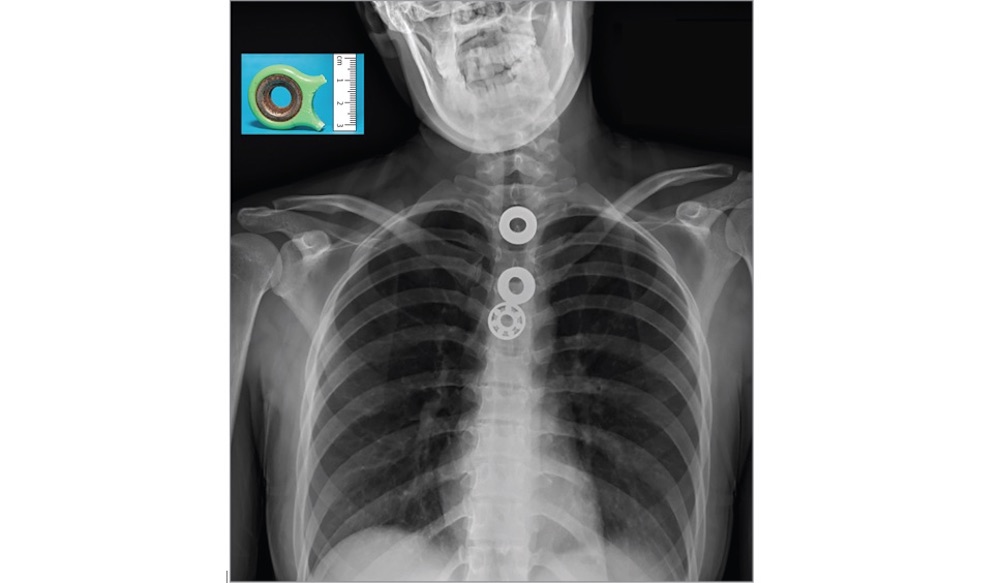Here's What Happens When You Break Apart a Fidget Spinner & Swallow It

Whether fidget spinners really help kids focus is unclear, but one thing is for sure: Don't take the ball-bearing toy apart and swallow the pieces. That's a lesson one Washington state teen learned the hard way.
The girl, who is in her late teens and had a history of depression, reportedly broke off the toy's three prongs and swallowed them, which led to severe neck pain and vomiting, according to a new report of the case.
She sought doctors' help at Seattle Children's Hospital, where a chest X-ray revealed three round metal pieces from the popular plaything in her esophagus, the tube connecting the throat to the stomach, according to the case report published today (Feb. 22) in the journal JAMA Otolaryngology — Head & Neck Surgery.
It's relatively rare to find multiple objects in the esophagus when a person accidentally or intentionally swallows them, but it happens, said Dr. Jonathan Perkins, a pediatric otolaryngologist at the children's hospital who treated the girl and co-authored the case report. [11 Weird Things People Have Swallowed]
The girl admitted to the doctors that she had intentionally ingested the toy parts. And in her case, the last piece she swallowed was the most challenging for her doctors to remove.
Tricky toy removal
The first two pieces of the fidget spinner ended up lower down in the girl's esophagus. These fragments eventually passed through the esophagus, into the stomach and on to the intestines, without doctors needing to remove them, Perkins said.
But the third piece got stuck. The sharp, jagged edges of the plastic toy piece, which resulted when the teen broke apart the fidget spinner, got wedged into the walls of the esophagus, Perkins told Live Science. Also complicating matters for doctors was the thickness of the toy and the large size of the piece (about 1.2 inches, or 3 centimeters), he noted.
Sign up for the Live Science daily newsletter now
Get the world’s most fascinating discoveries delivered straight to your inbox.
Perkins needed to perform a rigid endoscopy, a procedure in which he placed a stiff tube in the girl's mouth while she was sedated. Doctors can then insert a small camera and tools into this tube to explore the esophagus and carefully remove the object, if possible.
Because the piece of toy was about four times the size of the normal diameter of the esophagus and had sharp edges lodged into the walls, it was difficult to reach in and grab with a metal tool and pull it out, Perkins said. There were additional concerns about damaging tissue or causing tears in the esophageal lining while removing the piece.
If the endoscopy had not been successful, doctors would have needed to perform surgery through the girl's neck to retrieve the wedged-in toy, Perkins said.
As a result of the incident, the girl spent more than a week in the hospital. Her esophagus fully healed, but she probably won't be monkeying around with a fidget spinner anymore.
Originally published on Live Science.
Cari Nierenberg has been writing about health and wellness topics for online news outlets and print publications for more than two decades. Her work has been published by Live Science, The Washington Post, WebMD, Scientific American, among others. She has a Bachelor of Science degree in nutrition from Cornell University and a Master of Science degree in Nutrition and Communication from Boston University.










